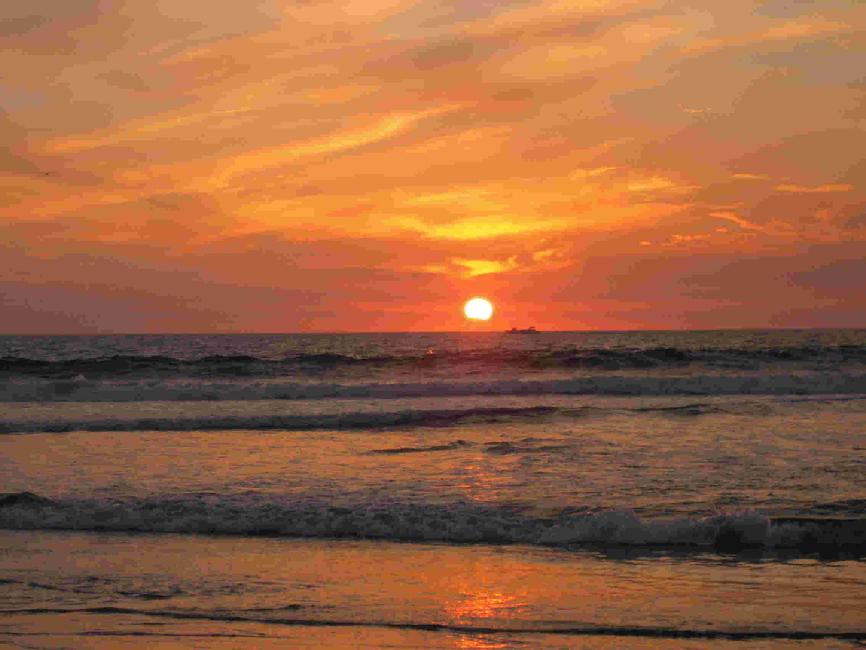 |
| Endless Love - Album Ten |
|
|
Saint Paul is the capital and second-most populous city of the U.S. state of Minnesota. The city lies mostly on the north bank of the Mississippi River, downstream of the river's confluence with the Minnesota River, and adjoins Minneapolis, the state's largest city. Known as the "Twin Cities", these two cities form the core of Minneapolis-Saint Paul, the 13th largest metropolitan area in the United States, with about 3.5 million residents. The city's population at the 2000 census was 287,151. Saint Paul serves as the county seat of Ramsey County, the smallest and most densely populated county in Minnesota.
Founded near historic Native American settlements as a trading and transportation center, the city rose to prominence when it was named the capital of the Minnesota Territory in 1849. Though Minneapolis is more nationally recognized, Saint Paul contains important institutions and the state's political activity. Regionally, the city is popular for the Xcel Energy Center, home of the Minnesota Wild, and for the Science Museum of Minnesota. As a business hub of the Upper Midwest, it is headquarters for companies such as Ecolab and Lawson Software. St. Paul, along with its Twin City, Minneapolis, is known for its high literacy rate. It is the only city in the US, with a population of 250,000 or more, to increase the circulation number of Sunday newspapers in 2007.
The settlement originally began at present-day Lambert's Landing but was referred to as Pig's Eye, when Pierre "Pig's Eye" Parrant established a popular tavern there. When Fr. Lucien Galtier, the first Catholic pastor of the region, established the Log Chapel of St. Paul (shortly thereafter to become the first location of the Cathedral of St. Paul), he made it known that the settlement was now to be called by that name, as "St. Paul as applied to a town or city was well appropriated, this monosyllable is short, sounds good, it is understood by all Christian denominations...".
|
|
History
Burial mounds in present-day Indian Mounds Park suggest the area was originally inhabited by the Hopewell Native Americans about two thousand years ago. From the early 17th century until 1837 the Mdewakanton Dakota, a tribe of the Sioux, lived near the mounds after fleeing their ancestral home of Mille Lacs Lake from advancing Ojibwe. They called the area I-mni-za ska dan ("little white rock") from the exposed white sandstone cliffs.
Following the Louisiana Purchase in 1803, a U.S. Army officer named Zebulon Pike negotiated for approximately 100,000 acres (400 km2; 160 sq mi) of land from the local Dakota tribes in 1805 for the establishment of a fort. The territory was located on both banks of the Mississippi River starting from Saint Anthony Falls in present-day Minneapolis to the confluence with the Saint Croix River.
|
| Fort Snelling was built on the territory in 1819 at the confluence of the Mississippi and Minnesota Rivers, which formed a natural barrier to both Native American nations. The 1837 Treaty with the Sioux ceded all local tribal land east of the Mississippi to the U.S. Government. Taoyateduta (Chief Little Crow V) moved his band at Kaposia across the river to the south. Fur traders, explorers, and missionaries came to the area for the fort's protection. Many of the settlers were French-Canadians and lived nearby. However, as a whiskey trade flourished, military officers banned settlers from the fort-controlled lands. Pierre "Pig's Eye" Parrant, a retired fur trader-turned-bootlegger who particularly irritated officials, set up his tavern, the Pig's Eye, near present-day Lambert's Landing. By the early 1840s, the community had become important as a trading center and a destination for settlers heading west. Locals called the area Pig's Eye (French: L'Oeil du Cochon) or Pig's Eye Landing after Parrant's popular tavern.
In 1841, Father Lucien Galtier was sent to minister to the Catholic French-Canadians and established a chapel on the bluffs above Lambert's Landing named for his favorite saint, Paul the Apostle. Galtier intended for the settlement to adopt the name Saint Paul in honor of the new chapel. In 1847 a New York educator named Harriet Bishop moved to the area and opened the city's first school. The Minnesota Territory was formalized in 1849 and Saint Paul named as capital. In 1857, the territorial legislature voted to move the capital to Saint Peter. However, Joe Rolette, a territorial legislator, stole the physical text of the approved bill and went into hiding, thus preventing the move. On May 11, 1858, Minnesota was admitted to the union as the thirty-second state with Saint Paul as the capital.
| |
That year, more than 1,000 steamboats were in service at Saint Paul, making the city a gateway for settlers to the Minnesota frontier or Dakota Territory. Natural geography was a primary reason the city became a landing. The area was the last accessible point to unload boats coming upriver due to the Mississippi River valley's stone bluffs. During this period, Saint Paul was called "The Last City of the East." James J. Hill constructed and expanded his network of railways into the Great Northern Railway and Northern Pacific Railway, which were headquartered in Saint Paul. Today they are the BNSF Railway.
On August 20, 1904, severe thunderstorms and tornadoes damaged hundreds of downtown buildings causing USD $1.78 million (1904) in damages in the city and ripping spans from the High Bridge. In the 1960s during urban renewal, Saint Paul razed western neighborhoods close to downtown. The city also contended with creation of the interstate freeway system in a fully built landscape. From 1959 to 1961, the western Rondo neighborhood was obliterated by the construction of Interstate 94 and brought attention to racial segregation and unequal housing in northern cities. The Rondo Days celebration annually commemorates the African American community.
|
|
Downtown had short skyscraper booms beginning in the 1970s. The tallest buildings were constructed in the late 1980s such as Galtier Plaza (Jackson and Sibley Towers), The Pointe of Saint Paul condominiums, and the city's tallest building Wells Fargo Place (formerly Minnesota World Trade Center). The 1990s to 2000s continued the tradition of ushering in new immigrant groups. As of 2004, nearly 10% of the city's population were recent Hmong immigrants from Vietnam, Laos, Cambodia, Thailand, and Myanmar.
|
Geography
Saint Paul history and the city's growth as a landing port are tied to water. The city's defining physical characteristic, the Mississippi and connecting Minnesota Rivers were carved into the region during the last ice age. Fed by receding glaciers and Lake Agassiz ten thousand years ago, torrents of water from a glacial river undercut the river valleys. The city is situated in east-central Minnesota.
| |
The Mississippi River forms a municipal boundary on part of the city's west, southwest and southeast sides. Minneapolis, the state's largest city lies to the west; Falcon Heights, Lauderdale, Roseville, and Maplewood are north; Maplewood is also to the east; the cities of West Saint Paul and South Saint Paul are to the south; and Lilydale, Mendota and Mendota Heights lie across the river from the city to the south. The city's largest lakes are Pig's Eye Lake, in the river, Lake Phalen, and Lake Como. According to the United States Census Bureau, the city has a total area of 56.2 square miles (145.5 km²). 52.8 square miles (136.7 km²) of it is land and 3.4 square miles (8.8 km²) of it (6.07%) is water.
|
|
Neighborhoods
Saint Paul's Department of Planning and Economic Development divides Saint Paul into 17 Planning Districts, created in 1979 to allow neighborhoods to participate in governance and utilize Community Development Block Grants. With a funding agreement directly from the city, the councils share a pool of funds. The councils have significant land-use control, a voice in guiding development, and they organize residents. The boundaries are adjusted depending on population changes, as such, they sometimes overlap established neighborhoods. Though these neighborhoods changed overtime, many of their historically-significant structures have been saved by preservationists.
|
The city's seventeen Planning Districts are:
- 1. Sunray-Battle Creek-Highwood
- 2. Greater East Side
- 3. West Side
- 4. Dayton's Bluff
- 5. Payne-Phalen
- 6. North End
- 7. Thomas Dale (Frogtown)
- 8. Summit-University
- 9. West End
- 10. Como (Como Park)
- 11. Hamline-Midway
- 12. Saint Anthony Park
- 13. Union Park
- 14. Macalester-Groveland
- 15. Highland (Highland Park)
- 16. Summit Hill
- 17. Downtown
- 18. Hillcrest (White Bear and Iowa)
| |
Minneapolis nicknamed "City of Lakes" and the "Mill City," is the county seat of Hennepin County, the largest city in the U.S. state of Minnesota, and the 48th largest in the United States. Its name is attributed to the city's first schoolteacher, who combined mni, the Dakota word for water, and polis, the Greek word for city.
Minneapolis lies on both banks of the Mississippi River, just north of the river's confluence with the Minnesota River, and adjoins Saint Paul, the state's capital. Known as the "Twin Cities," Minneapolis-St. Paul is the 16th-largest metropolitan area in the U.S., with 3.5 million residents. The Metropolitan Council estimated the city's population in 2009 as 386,691.
The city is abundantly rich in water with over twenty lakes and wetlands, the Mississippi river, creeks and waterfalls, many connected by parkways in the Chain of Lakes and the Grand Rounds Scenic Byway. It was once the world's flour milling capital and a hub for timber, and today is the primary business center between Chicago and Seattle. Named America's most literate city, it has cultural organizations that draw creative people and audiences to the city for theater, visual art, writing, and music. The community's diverse population has a long tradition of charitable support through progressive public social programs, as well as private and corporate philanthropy.
|
|
History
Dakota Sioux were the region's sole residents until French explorers arrived around 1680. Nearby Fort Snelling, built in 1819 by the United States Army, spurred growth in the area. The United States Government pressed the Mdewakanton band of the Dakota to sell their land, allowing people arriving from the east to settle there. The Minnesota Territorial Legislature authorized present day Minneapolis as a town on the Mississippi's west bank in 1856. Minneapolis incorporated as a city in 1867, the year rail service began between Minneapolis and Chicago. It later joined with the east bank city of St. Anthony in 1872.
|
Minneapolis grew up around Saint Anthony Falls, the highest waterfall on the Mississippi. Millers have used hydropower elsewhere since the 1st century B.C., but the results in Minneapolis between 1880 and 1930 were so remarkable the city has been described as "the greatest direct-drive waterpower center the world has ever seen." In early years, forests in northern Minnesota were the source of a lumber industry that operated seventeen sawmills on power from the waterfall. By 1871, the west river bank had twenty-three businesses including flour mills, woolen mills, iron works, a railroad machine shop, and mills for cotton, paper, sashes, and planing wood. The farmers of the Great Plains grew grain that was shipped by rail to the city's thirty-four flour mills where Pillsbury and General Mills became processors. By 1905, Minneapolis delivered almost 10% of the country's flour and grist. At peak production, a single mill at Washburn-Crosby made enough flour for twelve million loaves of bread each day.
Minneapolis made dramatic changes to rectify discrimination as early as 1886 when Martha Ripley founded Maternity Hospital for both married and unmarried mothers. When the country's fortunes turned during the Great Depression, the violent Teamsters Strike of 1934 resulted in laws acknowledging workers' rights. A lifelong civil rights activist and union supporter, mayor Hubert Humphrey helped the city establish fair employment practices and a human relations council that interceded on behalf of minorities by 1946. Minneapolis contended with white supremacy, participated in desegregation and the African-American civil rights movement, and in 1968 was the birthplace of the American Indian Movement.
During the 1950s and 1960s, as part of urban renewal, the city razed about two hundred buildings across twenty-five city blocks—roughly 40% of downtown, destroying the Gateway District and many buildings with notable architecture including the Metropolitan Building. Efforts to save the building failed but are credited with jumpstarting interest in historic preservation in the state.
|
 |
| Mississippi riverfront and Saint Anthony Falls in 1915. At left, Pillsbury, power plants and the Stone Arch Bridge. Today the Minnesota Historical Society's Mill City Museum is in the Washburn "A" Mill, across the river just to the left of the falls. At center left are Northwestern Consolidated mills. The tall building is Minneapolis City Hall. In the foreground to the right are Nicollet Island and the Hennepin Avenue Bridge. |
|
|
|
Geography and climate
The history and economic growth of Minneapolis are tied to water, the city's defining physical characteristic, which was sent to the region during the last ice age. Fed by receding glaciers and Lake Agassiz ten thousand years ago, torrents of water from a glacial river undercut the Mississippi and Minnehaha riverbeds, creating waterfalls important to modern Minneapolis. Lying on an artesian aquifer and otherwise flat terrain, Minneapolis has a total area of 58.4 square miles (151.3 km2) and of this 6% is water. Water is managed by watershed districts that correspond to the Mississippi and the city's three creeks. Twelve lakes, three large ponds, and five unnamed wetlands are within Minneapolis.
The city center is located just south of 45° N latitude. The city's lowest elevation of 686 feet (209 m) is near where Minnehaha Creek meets the Mississippi River. The site of the Prospect Park Water Tower is often cited as the city's highest point and a placard in Deming Heights Park denotes the highest elevation, but a spot at 974 feet (297 m) in or near Waite Park in Northeast Minneapolis is corroborated by Google Earth as the highest ground.
| |
| Minneapolis has a continental climate typical of the Upper Midwest. Winters can be cold and dry, while summer is hot and humid. On the Köppen climate classification, Minneapolis falls in the hot summer humid continental climate zone (Dfa); and has a USDA plant hardiness of zone 5a/4b. The city experiences a full range of precipitation and related weather events, including snow, sleet, ice, rain, thunderstorms, tornadoes, heatwaves, and fog. The warmest temperature ever recorded in Minneapolis was 108 °F (42 °C) in July 1936, and the coldest temperature ever recorded was −41 °F (−41 °C), in January 1888. The snowiest winter of record was 1983–84, when 98.4 inches (250 cm) of snow fell.
Because of its northerly location in the United States and lack of large enough bodies of water in close proximity to moderate the air, Minneapolis is sometimes subjected to cold Arctic air masses, especially during the months of January and February. The average annual temperature of 45.4 °F (7.4 °C) gives the Minneapolis–St. Paul metropolitan area the coldest annual mean temperature of any major metropolitan area in the continental United States.
|
 |
| North Saint Paul (Snowman) |
|
| |
|
Arlington, Virginia
The 1st Reconnaissance Battalion Reunion
Auqust 20th, 2011
|
 |
| Thanks for Stopping by today! |
|
|
 |
| Endless Love Index |
|
|
|